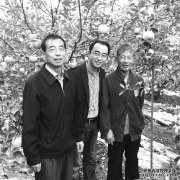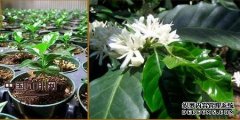The latest cultivation techniques of High quality Apple
1. Improve the variety structure. The introduction of Yanfu, Royal Paula, Sasha and other varieties to promote, gradually replace the old, miscellaneous and inferior varieties. Changfu and Qiufu should also be replaced by superior Fuji varieties. New varieties and rootstocks will be used in all new apple orchards.
2. Reasonable close planting, scientific planting, improve the quality of the garden. ① strictly prepares the soil and applies sufficient base fertilizer. Before planting, the planting pit is dug according to the required density, the specification is 0.8m × 0.8m × 0.8m, or the planting ditch is dug according to the row, with a depth of 0.6m and a width of 0.8m. The bottom soil is separated from the topsoil, and the bottom fertilizer 10000kg is applied to 667m2. After mixing with the topsoil, it is backfilled and filled to 20cm from the ground. ② reasonable close planting. In order to make rational and full use of land resources, the newly-built apple orchard is cultivated with close planting, with a row spacing of 2m m × 4-5m. ③ scientific planting. Planted from late March to early April in spring. Four days before planting, the planting hole was filled with enough water to make the living soil solid. The seedlings were soaked in clean water for 24 hours before planting, then dipped in mud and treated with rooting powder, and then planted immediately. Watering in time after planting, covering soil with plastic film to preserve soil moisture, and then covering with a layer of soil on the plastic film to protect the plastic film.
3. Apply fertilizer scientifically. ① applied basal fertilizer in autumn. The practice of applying base fertilizer in autumn is to apply organic fertilizer 3000kg every 667m2 for unfruiting trees and 5000kg for fruiting trees every 667m2. After mid-mature fruit harvest, late-ripening fruit harvest is combined with orchard deep ploughing, deep 20-30cm. ② controls nitrogen fertilizer and popularizes the use of compound fertilizer. Excessive use of nitrogen fertilizer can easily lead to the decline of fruit quality and soil consolidation. Special compound fertilizer and three-dimensional compound fertilizer for fruit trees should be used, generally, 0.25kg should be applied to each annual tree, and then 0.25kg should be increased every year. The fruit tree was calculated according to the fruit yield, and the compound fertilizer 100kg was applied to each 100kg fruit. ③ foliar spraying fertilizer. Foliar fertilizer spraying is a fertilization method with fast absorption and high fertilizer use efficiency. Humic acid efficient spray fertilizer is a kind of liquid fertilizer rich in nitrogen, phosphorus, potassium and other trace elements, which is non-toxic and pollution-free, and is an ideal fertilizer for the development of green food. Usage: spray 200 times liquid for 5 times in the growing season.
4. Reasonable shaping and pruning. The newly-built orchard adopts different shaping methods according to the planting density, the orchard with 2m × 4m row spacing adopts the slender spindle tree shape, and the 3mur4m × 4-5m orchard adopts the spindle shape. Results the main task of tree shaping is tree shape transformation, which makes it develop in the direction of improved spindle shape and dense layer shape. Shaping and pruning of ① young trees. The pruning of young trees is mainly plastic surgery, which is carried out in early spring. None of the skirt branches below the 50cm of the trunk are left, and all the branches above the 50cm are left with one branch per 20cm, so choose a good direction. All branches with length above 70cm are not cut, all are flattened and sprouted; the length of branches about 50cm is light and short: branches that are less than 30cm are extremely heavy and short to promote new shoots, and they will be treated again in the coming year. The central trunk is generally not cut short, but it is cut every 20cm ring to promote the uniform growth of branches. From May to June, the top should be twisted and coring in time to control growth, and the sturdy trees should be cut around the main branches to promote flower bud differentiation. Pruning the initial fruit tree of ②. The first fruit tree adopts the combination of winter and summer pruning, mainly summer pruning, to change the method of winter pruning in the past. Winter pruning is mainly thinning, shrunk as a supplement, to cultivate uniaxial extension of the main branch. For the upright branches in the crown, those with space should be flattened, and those with no space should be thinned; the long branches and thin and weak branches should be resolutely removed; the auxiliary branches that affect the growth of backbone branches should be shrunk mainly and transformed into large fruiting branches; for mediocre branches or moderately strong branches, long release should be carried out to promote flower formation. Summer pruning mainly adopts the methods of sprouting, branch pulling, twisting, ring peeling and so on. Twist the new shoots in time when the new shoots grow to 15cm in the middle of May, pick and control the growth of those that exceed 20cm, remove those that have no room for growth in time, and re-cut them to promote new branches if there is space. Girdling was carried out in the first ten days of June, trunk girdling was used for trees with strong potential, and ring cutting and hanging could be used for weak trees to promote flower bud differentiation and fruit expansion. Pull the branch or take the branch in August and pull the branch to nearly 80 degrees. Through reasonable pruning and shaping, the germination rate and flower formation rate can be improved.
5. Strengthen the management of flowers and fruits and improve the quality of fruits. ① determined fruit by flower, thinning flower and fruit. From the stage of inflorescence separation, one inflorescence is left every 20-25cm, one central flower is left in each inflorescence, and the rest are removed. In orchards with unstable flowering period, more central flowers can be kept, and fruit thinning will be carried out after fruit setting, leaving one fruit per 20-25cm. ② fruit bagging. Bagging begins two weeks after flowering and ends 45 days after flowering. Spray insecticides and fungicides all over the garden before bagging, and choose free sagging central fruit bagging. Take off the bag 25 days before harvest, the double-layer bag should first tear open the outer bag, and then remove the inner bag 5 days later. Combined with tearing bags, remove the shaded leaves next to the fruit, and spread a reflective film under the tree. ③ produces selenium-rich health apples. A large number of experiments have proved that selenium is the protector of important organs of the human body. Supplementation of 200 μ g (microgram) selenium every day can effectively prevent and cure various diseases of liver and heart. It can be sprayed with 5000 times of sterilized fertilizer II foliar one week before flowering, 10 days after falling flowers and one month before fruit harvest to produce selenium-enriched health apples.
- Prev

What is the monthly salary of 10,000 yuan with apple planting technology? go home to grow apples (photo)
Li Qingjun often spends time with fruit growers to discuss the knowledge of apple cultivation. Interviewees: Li Jing, a reporter from our newspaper, once worked for a listed company in Shenzhen, engaged in securities and investment and financing, with a monthly salary of more than 10,000 yuan, but this enviable white-collar worker chose to return after the company's listing.
- Next

Conditions for planting coffee trees
Coffee belt: coffee can not be grown in any environment, because it is originally a plant growing in a tropical rain forest, and in phylogeny, it forms the habit of calm wind, cool, shaded or semi-shaded and humid environment. We put both sides of the equator, north and south latitudes
Related
- Fuxing push coffee new agricultural production and marketing class: lack of small-scale processing plants
- Jujube rice field leisure farm deep ploughing Yilan for five years to create a space for organic food and play
- Nongyu Farm-A trial of organic papaya for brave women with advanced technology
- Four points for attention in the prevention and control of diseases and insect pests of edible fungi
- How to add nutrient solution to Edible Fungi
- Is there any good way to control edible fungus mites?
- Open Inoculation Technology of Edible Fungi
- Is there any clever way to use fertilizer for edible fungus in winter?
- What agents are used to kill the pathogens of edible fungi in the mushroom shed?
- Rapid drying of Edible Fungi

